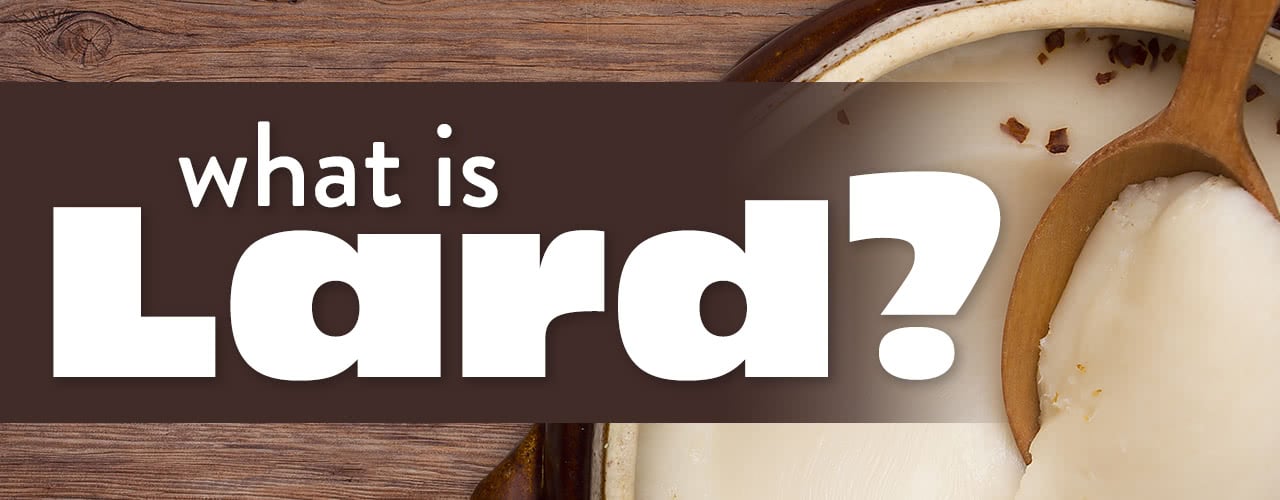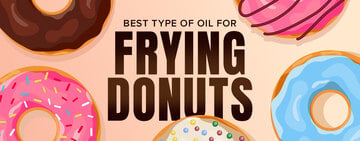Beef tallow is rendered beef fat, typically sourced from the suet surrounding the kidneys and loins of cattle. Once melted and purified, it transforms into a versatile, shelf-stable cooking fat prized for its umami flavor, cost-effectiveness, and high smoke point. From its traditional uses in frying and roasting to its modern applications in enhancing menu items and improving kitchen efficiency, beef tallow is a valuable ingredient for operators. Whether you're running a food truck, a fine dining establishment, or anything in between, beef tallow could be a game-changing ingredient for your business. Shop All Tallow Use these links to learn more about the various aspects of beef tallow: What Is Beef Tallow Used For? How to Make Beef Tallow How to Store Beef Tallow Beef Tallow vs Lard Beef Tallow FAQ What Is Beef Tallow Used For? Beef tallow is a powerhouse ingredient in the commercial kitchen, offering versatility and efficiency across several applications. Here are some of the most common ways operators utilize beef tallow to enhance their operations: Frying - With its high smoke point beef tallow is ideal for deep frying. It delivers perfectly crisp textures and a rich, savory flavor profile that enhances fried foods like donuts, french fries, chicken, and onion rings. Unlike many vegetable oils, tallow can be reused multiple times without degrading, making it a cost-effective choice for high-volume frying. Roasting and Searing - Chefs love using beef tallow to roast vegetables, sear proteins, and coat roasting pans. Its ability to add depth to the natural flavors of ingredients makes it a favorite for preparing everything from roasted potatoes to prime cuts of beef. Baking - In baking, beef tallow can replace fats like butter or shortening to create flakier pastries, richer pie crusts, and tender biscuits. Its neutral flavor and unique fat composition contribute to exceptional texture without overpowering other ingredients. Flavor Enhancement - Beef tallow can be used as a finishing fat to enhance the flavor of sauces, gravies, and even soups. Some operators drizzle it over dishes like steak or mashed potatoes for an extra layer of indulgence. Preservation and Food Prep - Historically used as a preservative, beef tallow can still play a role in modern kitchens by sealing and protecting prepared foods like pates or confit. Additionally, it’s an excellent choice for seasoning cast iron cookware, ensuring even heat distribution and a natural non-stick surface. How to Make Beef Tallow For operators looking to control costs and enhance ingredient quality, rendering beef tallow in-house is a straightforward process that can deliver significant benefits. By converting raw beef suet into tallow, you gain access to a versatile cooking fat at an affordable price. Below we've outlined a step-by-step guide to making beef tallow on a commercial scale: Source Quality Fat - The quality of your beef tallow starts with the fat you use. Suet, the dense fat surrounding the kidneys and loins of cattle, is ideal for rendering due to its purity and high fat content. Many operators source suet directly from local butchers or meat suppliers to ensure freshness and reduce procurement costs. Prepare the Fat - Begin by trimming any remaining meat or connective tissue from the suet to prevent impurities from affecting the flavor or texture of the tallow. Cut the fat into small, uniform pieces, or use a meat grinder for faster, more consistent rendering. Melt the Fat - Place the prepared suet into a large, heavy-bottomed pot or commercial-grade rendering equipment. Heat it slowly over low heat for approximately 3 to 4 hours, depending on how much fat you're rendering. Stir occasionally to promote even melting and prevent sticking. Strain and Purify - Once the fat has fully melted, take it off the burner and let sit for about 5 to 10 minutes before straining to remove any solid impurities. Use a fine mesh strainer, cheesecloth, or a commercial-grade filtering system to achieve a clean, clear liquid. You may need to do more than one strain to remove all impurities. For operations that require a high volume of tallow, automated filtration systems can save time and ensure consistency. Cool and Store (Optional) - The tallow can be used immediately or it can be stored for later use. Allow the strained liquid fat to cool slightly before transferring it to storage containers. Beef tallow solidifies as it cools, turning into a creamy, off-white solid. How to Store Beef Tallow Proper storage of beef tallow is essential for maintaining its quality, extending its shelf life, and ensuring food safety in commercial kitchens. Whether you're storing small batches for daily use or large quantities for long-term supply, the right storage methods can help preserve its integrity and usability. Use Airtight Containers - Store beef tallow in airtight containers to prevent oxidation and contamination. Stainless steel canisters, glass jars, or food-grade storage containers with secure lids work best for keeping your tallow fresh. Keep Away from Heat and Light - You'll want to store your tallow in a cool, dark place to prevent the fat from degrading. Avoid placing containers near sources of heat and light like stoves, fryers, or direct sunlight. Label and Date Storage Containers - Clearly mark containers with the date of rendering or purchase to track freshness and stay on top of inventory. You'll also want to rotate stock using a first in, first out (FIFO) system to ensure the oldest tallow is used first. Prevent Cross-Contamination - Always use clean, dry utensils when handling tallow to avoid introducing moisture or bacteria. If you're considering using tallow for multiple applications such as frying and baking, consider storing separate batches to maintain flavor integrity. Does Beef Tallow Need to Be Refrigerated? Beef tallow does not strictly need to be refrigerated, but its storage method depends on how long you plan to keep it and how often you use it in your kitchen. While refrigeration isn’t always necessary, it’s a good practice for maintaining the quality and safety of beef tallow in kitchens, especially for long-term storage or irregular use. How Long Does Beef Tallow Last? Depending on the storage method, beef tallow can last anywhere from a few months to a few years. This extended shelf life helps reduce waste and secures a consistent supply for high-volume operations. Room Temperature - If stored in an airtight container away from heat and light, beef tallow can last up to 6 months at room temperature. This makes it a convenient option for kitchens that use it frequently in cooking or frying. Refrigeration - For longer shelf life, refrigerate your beef tallow. Properly sealed, it can last 12 months or more in the refrigerator without losing quality. Freezing - To maximize its longevity, freeze beef tallow in tightly sealed containers or vacuum-sealed bags. Frozen tallow can remain fresh for up to 2 years, making it an excellent option for large-scale storage in commercial operations. How to Tell If Beef Tallow Is Rancid Fresh beef tallow has a neutral, slightly meaty aroma, so if it smells sour, metallic, or otherwise unpleasant, it may have oxidized and gone bad. Rancid tallow may also develop a yellow or brown tint instead of the off-white or creamy color of fresh tallow. If the texture of your beef tallow feels sticky or overly grainy instead of smooth and solid, it could be a sign of spoilage. Rancid beef tallow will also have an unpleasantly bitter taste that indicates its gone bad. Beef Tallow vs Lard The main difference between beef tallow and lard is beef tallow is rendered fat from cattle, while lard is rendered fat from pigs, often sourced from back fat or kidney fat. While beef tallow has a rich, savory, beefy flavor that enhances fried foods, lard offers a more neutral taste with subtle pork undertones. Lard also has a lower smoke point than beef tallow, making it suitable for frying but less stable at very high temperatures. Both fats are cost-effective alternatives to vegetable oils, but beef tallow is better suited for savory, beef-focused dishes, while lard excels in applications requiring a more neutral fat. Beef Tallow vs Beef Fat Beef tallow is rendered and purified beef fat, free from impurities like connective tissue or meat remnants, while beef fat is raw fat trimmed directly from the beef. Beef fat often contains bits of meat or tissue and requires rendering to become usable as tallow. In terms of storage, beef tallow can be stored at room temperature or refrigerated for months, while beef fat is perishable and must be stored in the refrigerator or freezer until rendered. Using raw beef fat requires rendering, which can increase prep time and equipment usage. Opting for pre-rendered tallow saves time and helps guarantee consistency in your dishes. Beef Tallow FAQ Below we answer some of the most common questions regarding beef tallow: What Is Wagyu Beef Tallow? Wagyu beef tallow is the rendered fat from Wagyu cattle, known for their high marbling and superior fat quality. Unlike regular beef tallow, Wagyu tallow has a softer texture, a lower melting point, and a more buttery mouthfeel due to its higher concentration of fats. While Wagyu tallow offers distinct advantages, it is more expensive than conventional beef tallow, making it best suited for restaurants and food businesses looking to offer a premium experience. Is Beef Tallow Expensive? Beef tallow is generally more cost-effective than many other cooking fats, particularly in high-volume commercial kitchens. However, the price can vary based on sourcing, quality, and whether it’s rendered in-house or purchased pre-rendered. Not only is beef tallow cost-effective, its long shelf life helps reduce waste costs and allows for it to be bought in bulk. Is Ghee Beef Tallow? No, ghee and beef tallow are not the same, though both are popular cooking fats with high smoke points and rich flavors. The key difference lies in their source and composition, as ghee is made from clarified butter, and beef tallow is made from rendered beef fat. Choose ghee for dishes that require a dairy-based richness, like curries, pastries, or sauteed vegetables, while beef tallow is better served for deep frying, searing meats, and adding a robust, beefy depth to dishes. Beef tallow is a versatile, cost-effective, and long-lasting cooking fat that offers significant benefits for commercial kitchens. Its high smoke point, rich flavor, and ability to be reused make it a smart choice for operators looking to optimize costs without compromising performance. By understanding how to store, use, and even render beef tallow in-house, businesses can take full advantage of this valuable ingredient, reducing waste and elevating their culinary offerings.






